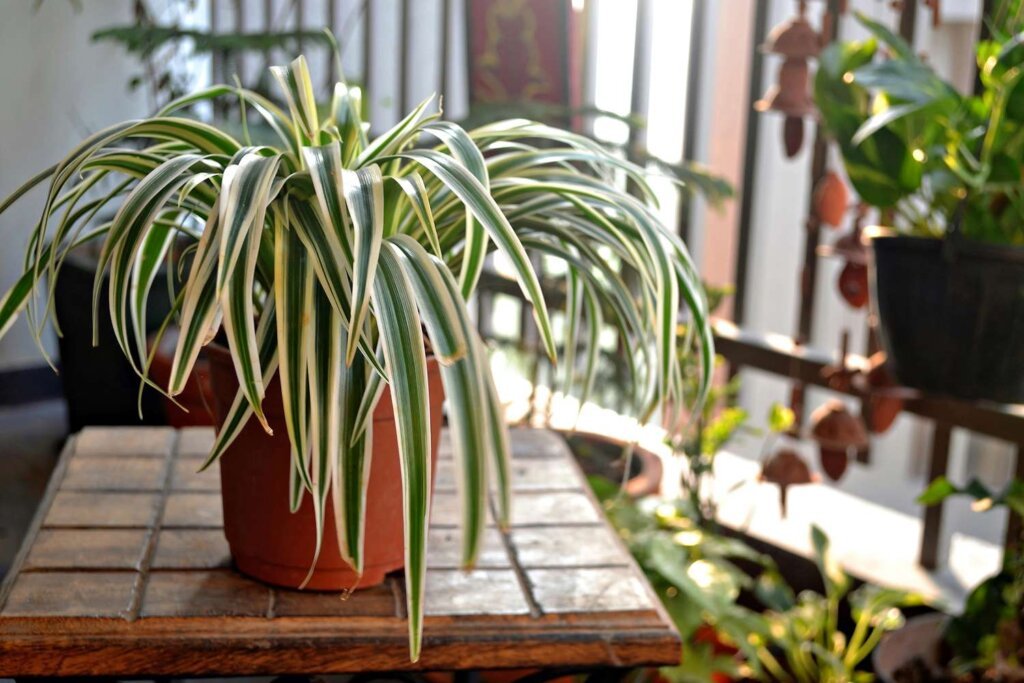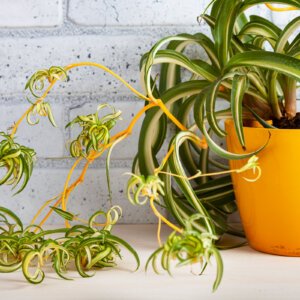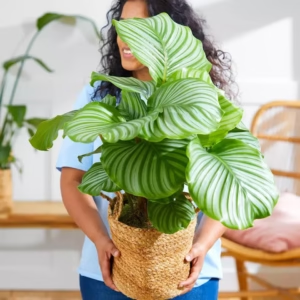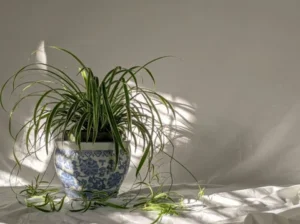Spider plants (Chlorophytum comosum) are among the most popular indoor plants, loved for their elegant green-and-white striped leaves, air-purifying qualities, and low-maintenance care. Many plant enthusiasts wonder: Can spider plants live outside in winter?
The short answer: No, spider plants can’t tolerate frost or freezing conditions. But if you live in mild winter regions, you may be able to keep them outdoors with the right care.
In this complete guide, we’ll explore everything you need to know—from temperature tolerance and winter protection tips to signs of cold stress and how to safely transition spider plants indoors.
Quick Answer: Can Spider Plants Survive Winter Outdoors?
- No – In harsh winters (below 35 °F / 1.5 °C), spider plants will suffer damage or die.
- Yes, with care – In mild climates (USDA Zones 9–11), they can remain outdoors year-round.
- Best option – Move them indoors when frost threatens for guaranteed survival.
If you want to grow a variety of houseplants year-round, a small indoor greenhouse can make winter care much easier.
Why Cold Weather Is Dangerous for Spider Plant
Spider plants originate from tropical Southern Africa and thrive in warm, humid conditions. Exposure to frost or freezing air stresses the plant and causes:
- Browning or black leaf tips
- Leaf curling or wilting
- Root damage from soggy soil
- Growth slowdown or complete dormancy
Even one night of frost can kill a healthy spider plant.
Ideal Temperature Range for Spider Plants
Here’s a quick temperature guide:
| Condition | Temperature (°F) | Temperature (°C) | Effect |
|---|---|---|---|
| Ideal Growth | 65–75°F | 18–24°C | Best foliage and spiderettes |
| Minimum Tolerance | 35°F | 1.5°C | Short exposure possible |
| Frost Damage | Below 32°F | 0°C | Severe damage, possible death |
Can Spider Plants Stay Outside in Mild Winters?
Yes—if you live in USDA Zones 9 to 11 (southern California, Florida, Texas, etc.), your spider plant may thrive outdoors year-round.
Tips for Mild Winter Outdoor Care
- Place in a sheltered spot (patio, porch, near walls).
- Use mulch around roots to trap soil warmth.
- Reduce watering to prevent rot.
- Protect from cold winds.
If you enjoy growing more than just spider plants, you’ll love this guide on Top 50 Indoor Plants for inspiration.
What Happens if Spider Plants Face Freezing Weather?
If you accidentally leave your spider plant outside during frost, here’s what you may notice:
- Blackened leaves – Frostbite damage
- Soggy roots – Waterlogged soil in cold temps
- Slow recovery indoors – Plant may take months to bounce back
- Permanent death – Roots rarely survive hard freezes
How to Move Spider Plants Indoors for Winter
Bringing your plant inside is the safest choice.
Step-by-Step Indoor Transition
- Inspect for pests – Check under leaves; treat with neem oil if needed.
- Prune damaged leaves – Trim yellow, brown, or dead foliage.
- Repot if needed – Refresh soil if root-bound or soggy.
- Choose a bright location – Near a sunny window (indirect light preferred).
- Adjust watering – Water less in winter; allow soil to dry slightly.
Want to add fragrance indoors? Pair your spider plant with a lavender plant for natural beauty and aroma.
Can Spider Plants Stay in Garages or Porches?
- Yes – Only if temperatures stay above 40°F (4°C).
- No – If the area dips below freezing.
Tip: Use a thermometer and supplement light with grow lamps if kept in dark garages.
Should You Use Plant Covers for Outdoor Spider Plants?
Plant covers can help short-term protection during unexpected frosts.
Best Options:
- Frost cloths or garden blankets
- Mini greenhouses or cloches
- Old bed sheets (emergency solution)
Reminder: Covers work for short cold snaps, not extended winters.
Signs Your Spider Plant Is Too Cold
If your spider plant shows these symptoms, act fast:
- Mushy or soft stems
- Leaf curling or discoloration
- No new growth for weeks
- Soil that stays cold and soggy
Pro Tips for Spider Plant Winter Care Indoors
- Use a humidity tray to prevent dry air damage.
- Avoid placing near heaters or drafty windows.
- Fertilize lightly once a month (if actively growing).
- Rotate weekly for even sunlight exposure.
For more guides on pet safety and plant issues, visit our category on Spider Plant Pets and Problems.
Final Verdict: Keep Spider Plants Indoors in Winter
Unless you live in a frost-free climate, spider plants should not be left outside in winter. Treat them as houseplants during cold months, and they’ll reward you with lush leaves, spiderettes, and fresh air purification year-round.
If you’re a cat owner, don’t miss this important read: Are Spider Plants Toxic to Cats?
FAQs About Spider Plants in Winter
Q1: Can spider plants survive one night of frost?
A: Not usually. Even one frost night can cause irreversible damage. Bring indoors immediately.
Q2: Will my spider plant recover after frost damage?
A: Possibly, if roots remain healthy. Trim dead leaves, repot if needed, and care indoors.
Q3: What temperature kills spider plants?
A: Prolonged exposure below 32°F (0°C) can kill them.
Q4: Can spider plants grow outdoors year-round?
A: Yes, in warm zones (USDA 9–11) where winters don’t dip below freezing.
Q5: Do spider plants need fertilizer in winter?
A: Fertilize sparingly—only if actively growing indoors. Over-fertilizing in winter stresses the plant.





